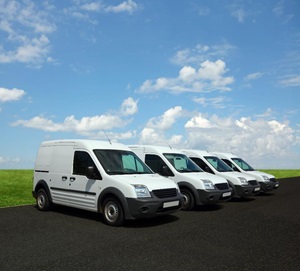- E-Buses
- Transportation Efficiencies
- Public Transit
Denver RTD Hops on the Electric Bus Line

Commitments to electric buses (e-buses) are ramping up in the United States. Several agencies are bringing in fleets of a few dozen to over 100 e-buses over the next few years. One such agency, the Regional Transportation District (RTD) of Denver, is deploying 36 e-buses from Chinese company BYD Motors, Inc. Among the biggest drivers for the interest in e-buses is their increased efficiency. These BYD buses are expected to get 12 MPGe to 14 MPGe, significantly improving on the 3-4 miles per gallon of diesel buses. E-buses also have reduced maintenance costs. RTD says the biggest maintenance issue with these buses are the doors.
BYD Bus Details
Each vehicle costs $750,000; this includes the price of the battery chargers and a lifetime warranty for the lithium iron phosphate batteries. Lithium iron phosphate batteries were chosen for two reasons: they are designed to prevent thermal runaway and the batteries are air-cooled to maintain a narrow range of temperatures.
The buses have a maximum battery capacity of 292 kWh that requires 3-4 hours of charging time, giving them 12-14 hours of continuous use before requiring a charge. This has been demonstrated to provide 200 miles of range at 30-40 mph. However, in operation, the range is closer to 80 miles because buses make frequent stops during the 1.3-mile route.
Incorporating E-Buses into the Fleet
Three-phase alternating current (AC) fast-charging stations were installed for the fleet. The AC-to-direct current (DC) converter is onboard the bus. The lack of fast-charging standards in the United States for heavy duty vehicle e-buses is a challenge, as buses must be coupled with proprietary standards. That being the case, RTD has opted to use European standards. The construction of the charging station cost $432,000; this figure does not include the cost of the battery charging equipment.
Because the new fleet is quieter than traditional buses, they have been outfitted with noise generators (that fluctuates pitch with the vehicle’s speed) to notify pedestrians of their presence when operating along the pedestrian-oriented 16 Street Mall. The buses were ordered in 2015 and manufactured in China; final assembly will take place in Lancaster, California to meet Buy America requirements. As of August 2017, 34 of 36 buses had been delivered. RTD has indicated it hopes to incorporate e-buses in regular operations in the future.
Although the e-bus rollout has been successful to date, RTD reports that few agencies have reached out for advice about implementing their own e-bus fleets. Nevertheless, transit agencies across the United States are taking a good look at e-buses.
Other Market Drivers
While lower operations and maintenance costs are already market drivers, there are other market drivers that will become more prominent and increase the desire for e-bus adoption. Dynamic charging systems would enable buses to carry smaller batteries, decreasing costs. In addition, vehicle automation is well-suited for EVs on fixed routes, including buses. Other market drivers include increasing cities’ targets for air quality and climate change concerns and increased demand for vehicles with a reduced carbon footprint. According to Guidehouse Insights' recent Market Data: Electric Drive Buses report, electric powertrain buses (including all types of hybrids) are expected to grow from approximately 21% of the total bus market in 2017 to around 22% in 2027.